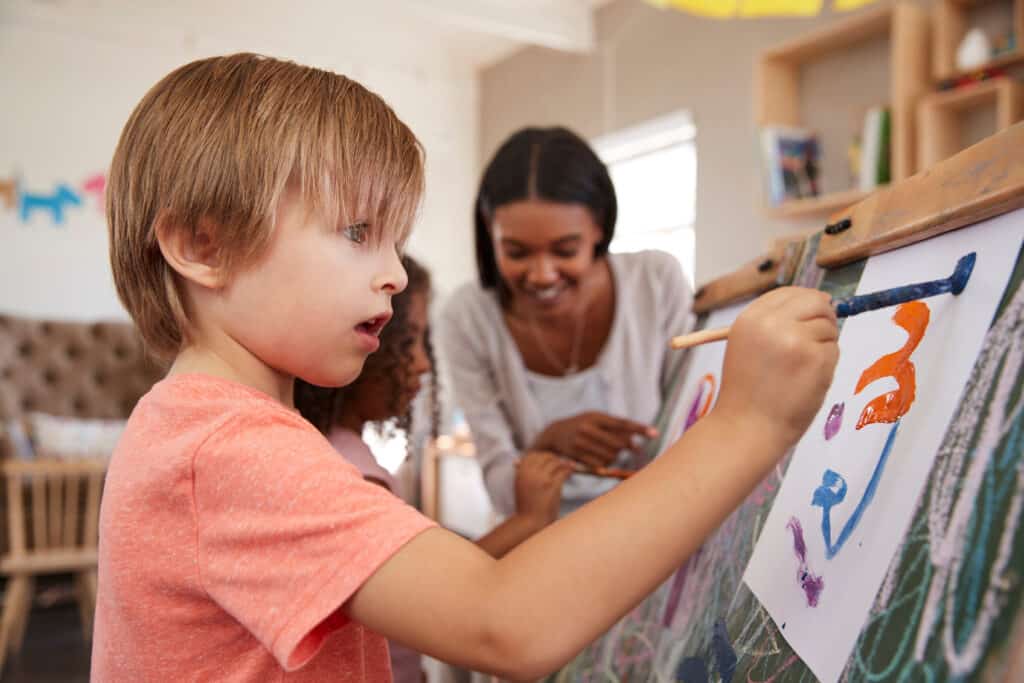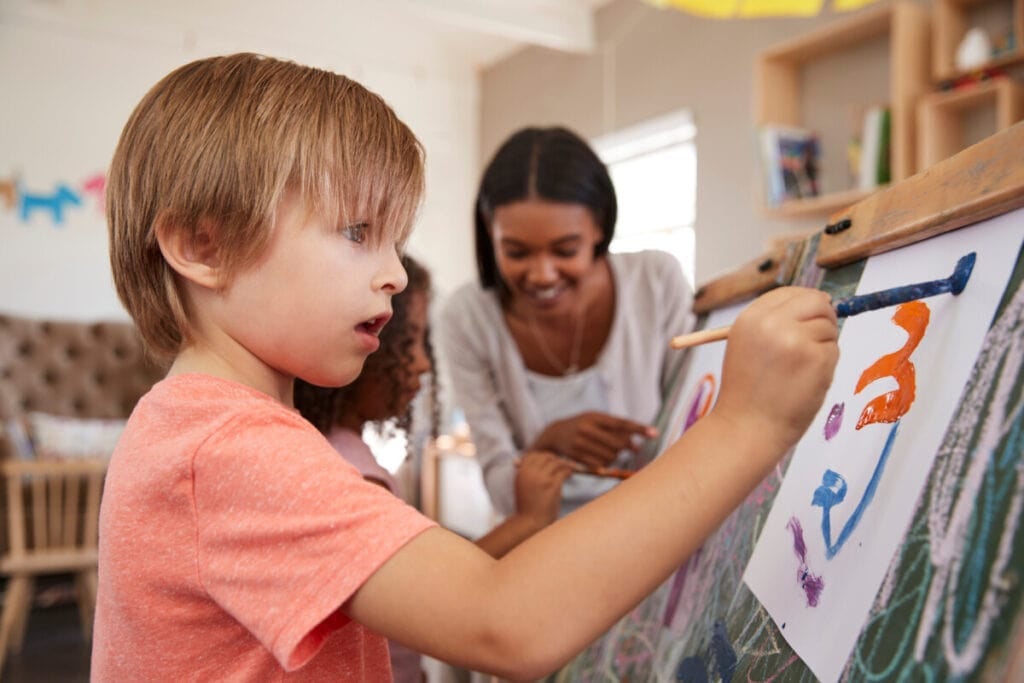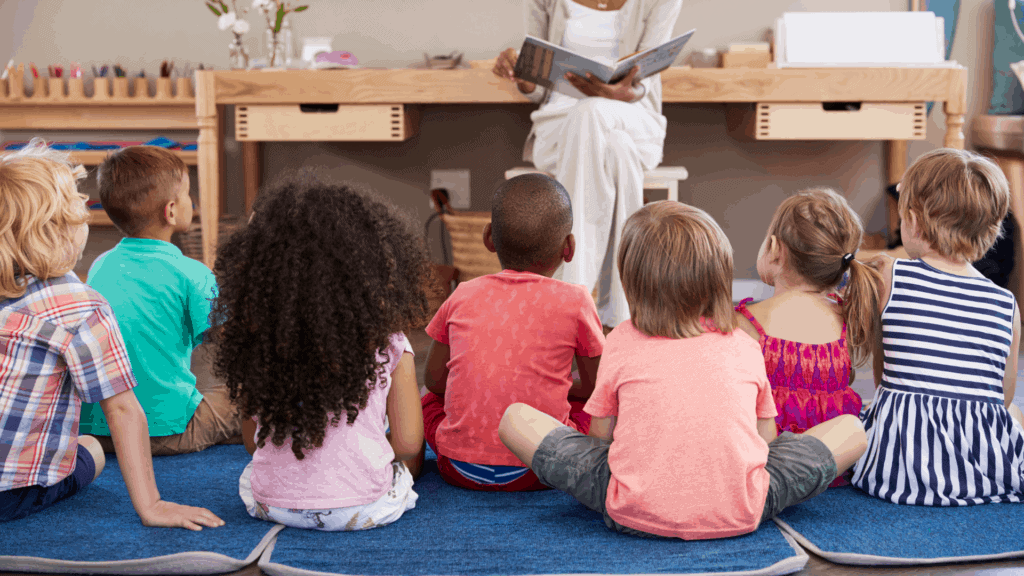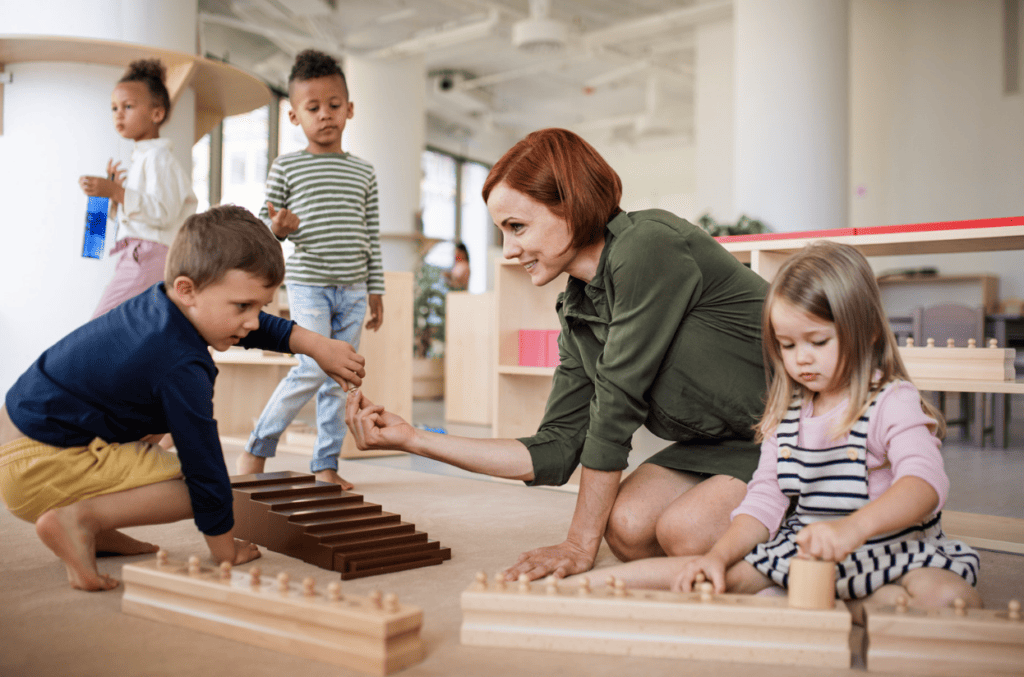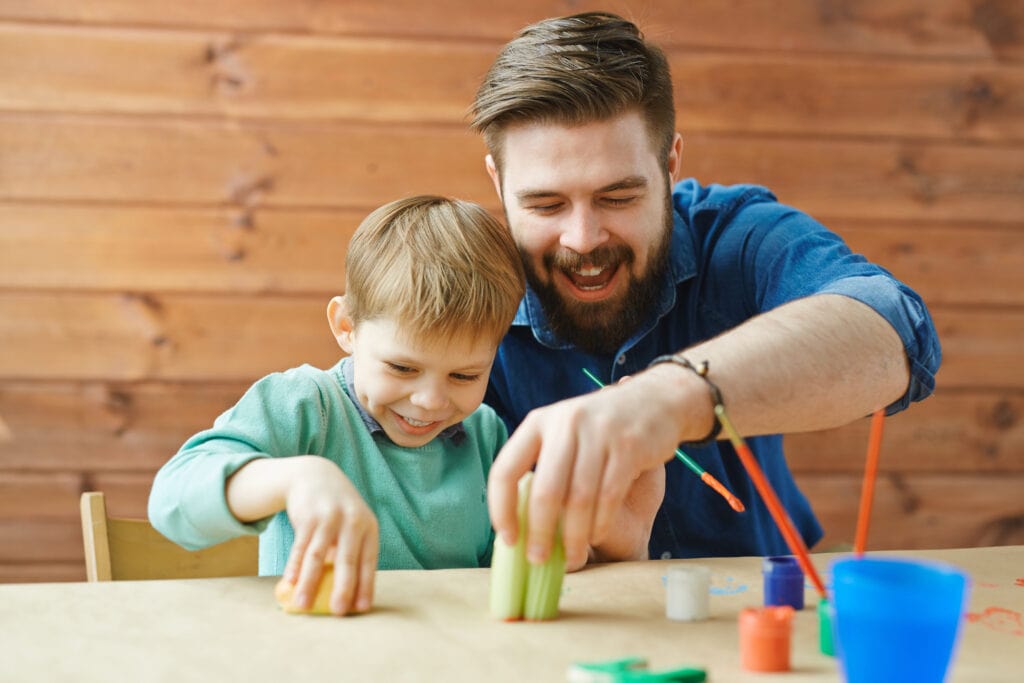One of the best things about
Though The Brown Stairs may look like a simple set of blocks, it’s actually so much more. The Brown Stairs are a
Because
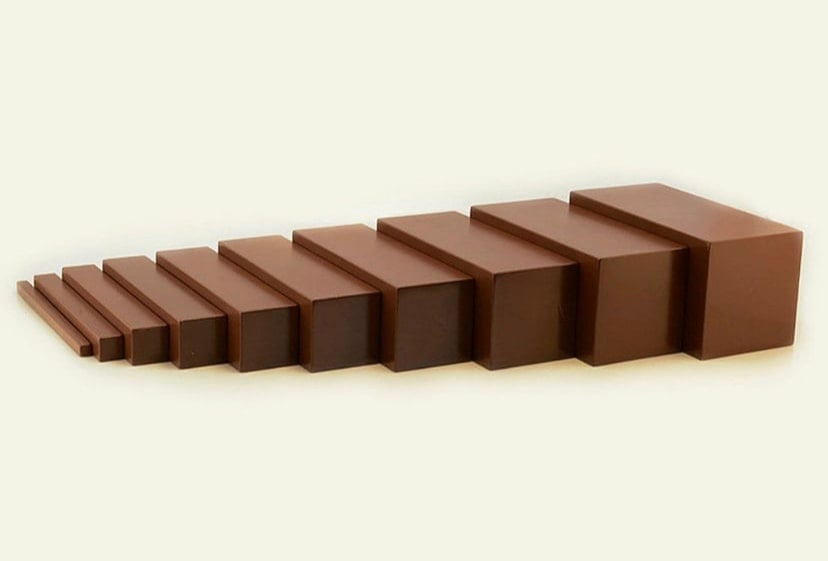
Montessori for Today picks out furniture, educational tools, toys and lifestyle items that we think are the best and most exciting, based on independent research and careful consideration. On some occasions we earn revenue (at no additional cost to you) if you click the links and buy the products. But this doesn’t affect what we choose to highlight and we will never let it bias our coverage.
What Are The Montessori Brown Stairs?
The
All ten of the “steps” in a set of Brown Stairs are the same length, yet different widths, heights, and weights. Each step is exactly 1cm taller and wider than the step before it. (Because the steps are square prisms, the height and width are the same dimension.)

If you were to measure the blocks, you’d typically find that each block is 20cm long (though some sets have slightly longer or shorter lengths) with the largest block measuring 20cm X 10cm and the smallest block measuring 20cm X 1cm. Though the lengths can sometimes vary from set to set, the number of blocks in the set, the width/height 1:1 ratio, and the standardized difference between each block being equivalent to the height of the smallest block should not.
How Are The Brown Stairs Used in Montessori ?
Before we get into how to introduce The Brown Stairs to your child, it’s important to know how The Brown Stairs are used and what the purpose is behind it.
The Brown Stairs are a sorting toy used to help children visually distinguish between size relationships. Since The Brown Stairs are tangible and meant to be lifted and moved, children additionally have to engage in other physical skills like proprioception in order to discern relationships like “bigger” and “smaller.”
The goal of using The Brown Stairs is to sort the blocks into descending or ascending size order, therefore creating a set of “stairs” out of what first appears to be a random group of blocks.
This activity is best suited for younger children who are still building an understanding of size and what it means to sort and group objects. Most people tend to introduce The Brown Stairs to their child when their child is between the ages of two and four, which is right around the time most children are in their Sensitive Period for Order and right before they enter their Sensitive Period for Mathematical Concepts.
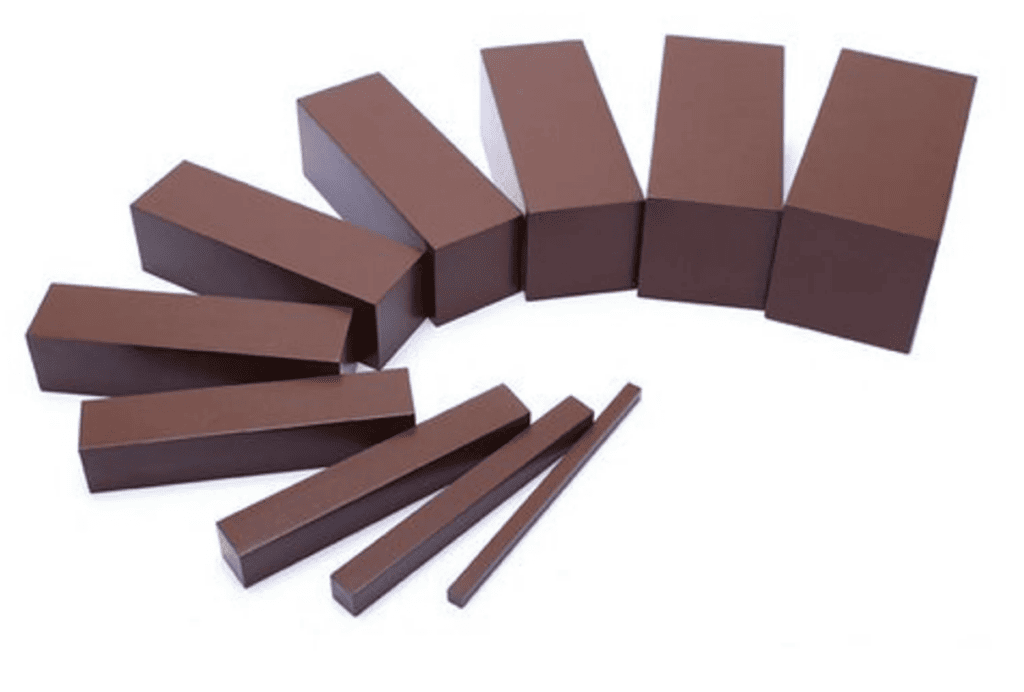
Like many
Think about a time you’ve seen a child stacking up toys by size or sorting their food according to color. These are naturally occurring processes that children use to teach themselves important ways of engaging with their worlds. The Brown Stair, fitting with the
How To Set Up and Introduce The Brown Stairs
Like all
Below is a basic outline for how to set up this toy and introduce it to your child. However, you should feel free to modify these steps (or allow your child to modify these steps) as needed to suit your child’s learning style best. Let them take the lead!
Since the goal of The Brown Stair is to sort the blocks into a stair-like pattern, the blocks should first be introduced in a random order. It can be helpful to allow your child to set them up themselves. Since most children will not look to sort these blocks by size right away, this will ensure a random order while also engaging your child with this toy before their “work” with it even begins!
This will also help your child get a sense of how heavy the blocks are and what it will take to move and lift them. As this is an activity designed for younger children, just lifting the blocks is learning in and of itself! You can ask your child to place the blocks in a line, so that they are already primed to see these blocks as a sequence, or set, of blocks, rather than individual pieces with no relation to each other.
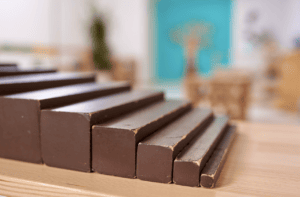
The Brown Stairs should be stored, like all
In other
Begin by picking up each block. You can model weighing it in your hand and turning it around to observe it from different angles. What you are trying to model for your child here is that you’re taking note of the block’s size and shape. Then, you can model lining up two blocks next to each other, using your hands to show that you see that the blocks are the same length but different heights and widths.
Once you do this, it’s time to make your stairs! Model searching for the largest block by grabbing one of the larger blocks and going down the row to compare its size to the other blocks. If you compare it to another block and another block is larger, pick that block up instead. Do this until you’ve found the largest block, then place this block at one end of line. Do the same in order to find the next largest block, and model comparing it to the largest block.
Repeat this until all blocks are in order from largest to smallest, creating a stair. The blocks should be pushed together with their lengths lined up and no gaps left in between. Lastly, you can model taking the smallest block (20cm X 1cm X 1cm) and using it to check that the difference between each subsequent block is exactly 1cm squared. You can also run the smallest block down the length of the stairs, which will make a fun sound that might get your child even more excited to try it on their own!
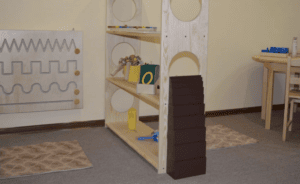
Once you’re finished modeling, mix the blocks back up and give your child a chance to try! While you can explain the goal of the activity to them (now that they’ve seen it in action, it should be easier to understand), you should not coach them through the activity or give them “hints” about what to do. Instead, allow them the freedom to explore on their own.
Take note of the strategies they use to compare sizes. Are they lining the blocks up? Weighing them in their hands? Are they starting with the smallest block or the largest block? These observations can provide valuable insights into your child’s mind and how they process new information.
After giving your child space to try out the activity once, you can extend the activity by having them place the blocks back on their shelf in reverse order (if you moved them from their shelf) or by inviting them to use the blocks alongside The Pink Tower, as the two toys are designed to fit together! This extension will allow them to make even more comparisons, as the blocks comprising The Pink Tower are different lengths.
Benefits of The Brown Stairs
Though the skills used to create The Brown Stairs may seem simple, they are actually the building blocks (see what I did there?) for foundational math concepts, particularly those relating to geometry. In order to build The Brown Stair, children are required to compare shapes and sizes, identify shared traits and differences in objects, sort objects according to traits, sequence objects, and do rudimentary measurement. These are all important math skills! As children age and grow, they will begin applying these skills to more and more abstract concepts, moving from objects themselves to two-dimensional representations, to numbers and symbols.
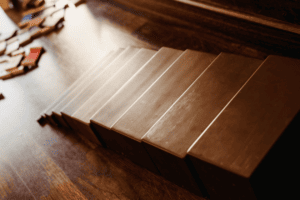
The Brown Stair has benefits extending even beyond math, however! “Heavy work,” which is what children are doing when they are lifting and moving the blocks, is a term that refers to any work children do that involves lightly to moderately strenuous activity that engages their proprioception and gross motor skills. This is particularly important during the ages of 2-4 as children adjust to moving through the world with autonomy. Working with The Brown Stairs also helps your child develop their hand-eye coordination, fine motor-skills, and visual schemas. Lastly, this activity builds concentration, focus, and problem-solving skills.
Where to Buy the Montessori Brown Stairs
You can purchase sets of Brown Stairs on online Montessori stores, Amazon, or Etsy. Some of these sets can be a bit pricey, but if that’s an impediment, that’s no problem! Building your own set of The Brown Stairs is relatively easy, and it can be a fun and rewarding activity to do together with your child. If you or someone in your household is handy, you can build your own set using wood. It’s also possible to build your own set out of a material like cardboard or cardstock. If you choose this option, however, you may want to consider filling each step with some kind of slightly heavy material like dry beans, as the difference in weight between each block will become important for
Block 1: 20cm X 10cm X 10cm
Block 2: 20cm X 9cm X 9cm
Block 3: 20cm X 8cm X 8cm
Block 4: 20cm X 7cm X 7cm
Block 5: 20cm X 6cm X 6cm
Block 6: 20cm X 5cm X 5cm
Block 7: 20cm X 4cm X 4cm
Block 8: 20cm X 3cm X 3cm
Block 9: 20cm X 2cm X 2cm
Block 10: 20cm X 1cm X 1cm
Try out The Brown Stair with your child and see how much they learn!



